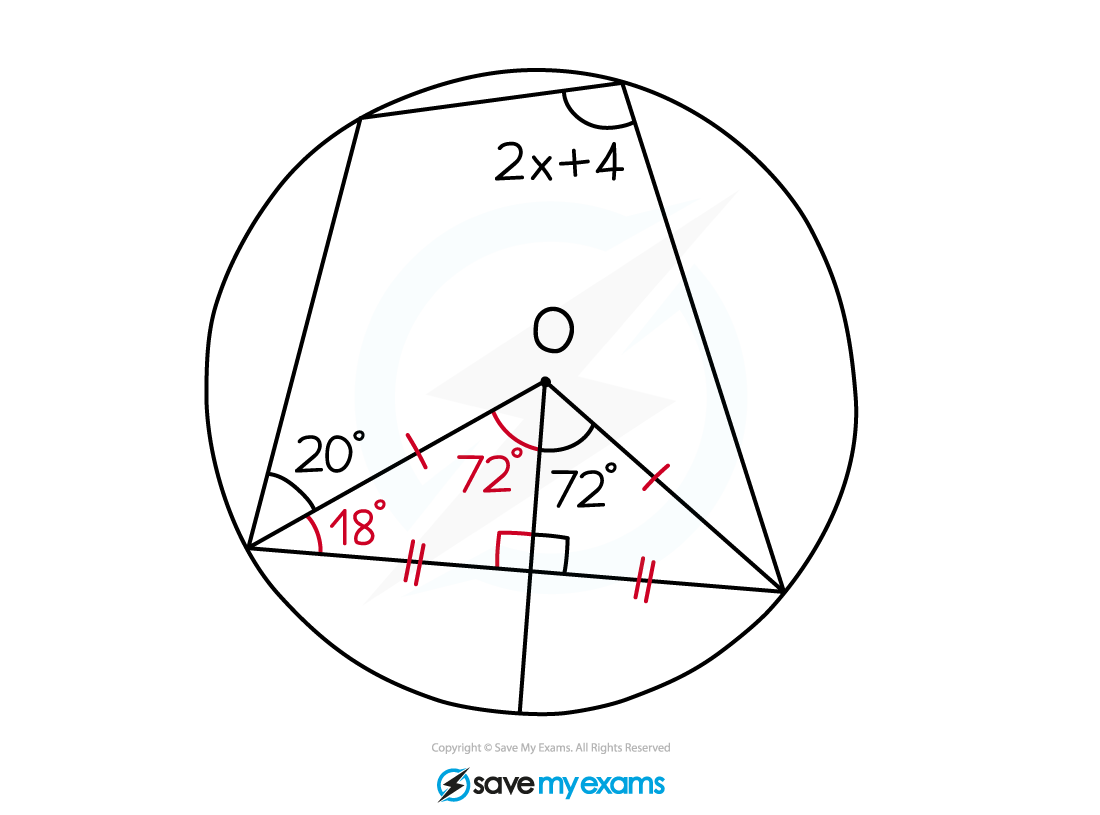Angles in Cyclic Quadrilaterals (Cambridge (CIE) IGCSE Maths): Revision Note
Cyclic Quadrilaterals
Circle theorem: Opposite angles in a cyclic quadrilateral add up to 180°
A quadrilateral that is formed by four points on the circumference of a circle, (a cyclic quadrilateral), will have pairs of opposite angles that add up to 180°

To spot this theorem in a diagram
look for quadrilaterals that have all four points on the circumference
When explaining this theorem in an exam you must use the keywords:
Opposite angles in a cyclic quadrilateral add up to 180°
The theorem only works for cyclic quadrilaterals
The diagram below shows a common scenario that is not a cyclic quadrilateral

Examiner Tips and Tricks
Cyclic quadrilaterals are often easy to spot in a busy diagram
Mark on their angles (even if you think you don't need them) as they may help you later on!
Worked Example
The circle below has centre, O.
Find the value of .

Identify both the cyclic quadrilateral and the radius perpendicular to the chord
Add to the diagram as you work through the problem

The radius bisects the chord and so creates two congruent triangles
Use this to work out 72° (equal to the equivalent angle in the other triangle)
And 18° (angles in a triangle add up to 180°)
Then use that opposite angles in a cyclic quadrilateral add up to 180°

You've read 0 of your 5 free revision notes this week
Sign up now. It’s free!
Did this page help you?

